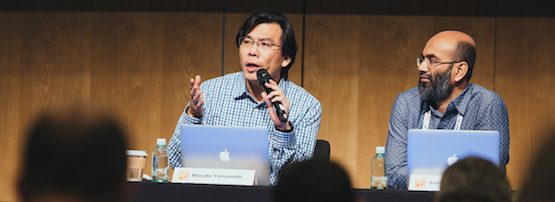
There’s a surprising diversity in the procedures used to elect Policy working group office holders across the five RIR regions.
I looked into this at the request of the Policy SIG Chair after APNIC 41 in Auckland. The results are here in more detail, but generally, the approach taken by the community in each region varies from incredibly casual, to quite formal.
In the RIPE NCC region, for example, until relatively recently, there weren’t even any term lengths for Address Policy Working Group (APWG) Chairs. The APWG is roughly equivalent to the APNIC Policy SIG where we have a two-year term.
The situation at the RIPE NCC changed recently when the current sitting Chairs decided a review of the procedures should be considered by the community. Now one of the two Co-Chairs voluntarily resigns each year. If a new community member is interested in serving, they can nominate and the decision of who to appoint is agreed by consensus. From memory, I think that so far there have been no contenders. The community continues to be very happy with the incredibly hard working and dedicated Co-Chairs of the RIPE NCC APWG.
At APNIC we don’t appoint new Chairs and Co-Chairs by consensus, we vote. It’s the only time we actually count hands in the Policy SIG. It is the same procedure for all APNIC SIGs. Ideally, a Chair is elected first. Then after a year a Co-Chair joins them. Then every year the SIG continues, there is an election for either the Chair, or a Co-Chair alternatively. This provides continuity of stewardship.
It doesn’t always work out so cleanly. Sometimes a Chair will need to resign their position to accommodate changing professional responsibilities and is not able to complete their term. Usually, a Co-Chair steps up and takes the Acting role until there is an election at the next SIG meeting.
Mostly the SIGs have survived along these lines, following the SIG Guidelines of procedure and adapting them by consensus when situations fall outside the strict procedural rules. Sometimes it gets a little messy. There are some points in the guidelines that lack clarity, such as how to deal with remote participants.
A SIG member is anybody who participates at any given time. Anyone who subscribes to the mailing list is a SIG member. Anybody who turns up to the SIG meeting is a SIG member. Any remote participants to a SIG meeting are SIG members, even if it is their first and last time.
Every member has equal rights to participate in the discussion and decisions of the SIG, except appointing a Chair or Co-Chair. The SIG Guidelines require a nominee and a voter to be present and ‘voting will take place by a count of a show of hands’, according to the Guidelines. This discounts people who participate remotely and people who only participate as a mailing list member.
Who has put forward the proposal and why?
Masato Yamanishi, an outgoing Chair whose position as Policy SIG Chair will be up for election at APNIC 43, has put forward a proposal for Revising eligible voters of Chair election and Chair’s term. Masato became a Policy SIG Co-Chair in August 2011 before serving as Acting Chair and then Chair.
His professional responsibilities have changed and so he will not stand for re-election, although he has agreed to see out the rest of his term.
As a Chair with no intention of future candidacy, Masato felt he was well positioned to conduct a review of the Election procedures and has put forward the proposal linked above. It attempts to clarify the two issues I’ve outlined: who is an eligible voter, and what happens when a Chair steps down?
The core of Masato’s proposal currently under discussion is as follows:
1. Eligible voters in SIG Chair election
I would like to propose limiting eligible voters of SIG Chair election to registered participants of APNIC Conference where the election is held.
In this context, registered participants include remote participants who register to Confer, or its successor in future.
2. SIG Chair’s term of service
I would like to propose aligning Chair'[s] term with Co-Chair’s term, which means that Chair and all Co-Chair will serve for same two years.
To keep this alignment, I would like to propose limiting the successor’s term to remaining term of current Chair/Co-Chair if current Chair/Co-Chair resigned or was removed.
In what is believed to be a first for APNIC, there will be a joint sitting of all three current SIGs to discuss and come to a consensus decision on the proposal.
If you would like to know more about this issue, there is a web page dedicated to the Chair Election Procedure Review on the APNIC website.
Want to know more?
Join our Facebook Live Q&A session this Wednesday, 28 September from 13:00 (UTC +10) as we discuss this and two other policy proposals to be discussed at APNIC 42.
Join the event and post your questions now!
If you won’t be at APNIC 42,you can participate in the YouTube Live and Adobe Connect broadcasts of Policy SIG sessions, starting at (UTC +05:30) Tuesday, 4 October.
The views expressed by the authors of this blog are their own and do not necessarily reflect the views of APNIC. Please note a Code of Conduct applies to this blog.
